Oswayo Formation (Glenn, 1903)
Lithology. The Oswayo Formation contains interbedded sections of gray shales, silty shales shaly siltstones, siltstones and fine-grained sandstones and thick sandstone packets of green- to bluish-green fine to medium-grained sandstones. The green color in the Oswayo Formation sands may result from higher concentrations of glauconite present in the matrix; further petrological study would be required to ascertain the exact cause. The interbedded sections were dominated by shales and silty shales with very few, thin (< 2 centimeters) fine-grained sandstone beds. Typical bedding observed in the interbedded sections is straight to curved crested asymmetric ripples. Solemarks were commonly observed on the base of thin sandstones in the form of grooves and striations, and load casts were observed along the amalgamation between two thin sandstones.
The thicker sandstone packets vary in thickness from 1.6 to 3.5 meters. Thinner sandstone packets observed in the Allentown quadrangle were dominated by SCS bedding, while outcrops in the Olean quadrangle contain primarily tabular cross-sets, with lesser occurrences of foresets, SCS, and planar laminations. Coquinites were observed in the thicker sandstone packets as thin lenses in the sections with SCS.
The base of the formation observed in outcrop south of Olean, along Route 16, shows an abrupt change from red interbeds to gray interbeds. Just south of the study area in Pennsylvania, also on Route 16, the Cattaraugus Formation is clearly eroded by the sandstones of the Oswayo Formation. A photograph of the Oswayo Formation eroding down into the Cattaraugus Formation is shown in Woodruff, (pg. 65, Figure 20, 1942).
Ichnology. The interbedded sections of the Oswayo Formation contain a low diversity, poorly developed Cruziana ichnofacies with sporadic occurrences of Planolites. The thicker sandstone packets contain a mixed Cruziana and Skolithos ichnofacies, with Planolites commonly observed on the base of the thicker sandstone beds, and Arenicolites sporadically observed in the thicker sandstone beds.
Interpreted Depositional Environment. The Oswayo Formation is interpreted as representing deeper water, marine facies compared to the Cattaraugus Formation. The lack of HCS and thicker sandstone beds within the interbedded section suggests a quieter, or more sheltered depositional environment than observed in the interbedded section of the Machias Formation and the Conneaut Group. The thicker sandstone packets do show the presence of the storm-influence in the SCS beds, but overall the level or storm-influence is low. The thick sandstone packet that occurs on Barnum Road, in the Olean quadrangle is interpreted to represent a deposition as a barrier bar. The interbedded sections were interpreted to represent bay or lagoon facies such that the depositional environment was protected from all but the major storms. The thicker sandstone packets occurring above the Barnum Road outcrop display more SCS and were interpreted as being storm-deposited bars that were reworked, slightly, by weak- fair-weather waves.
Oswayo Formation
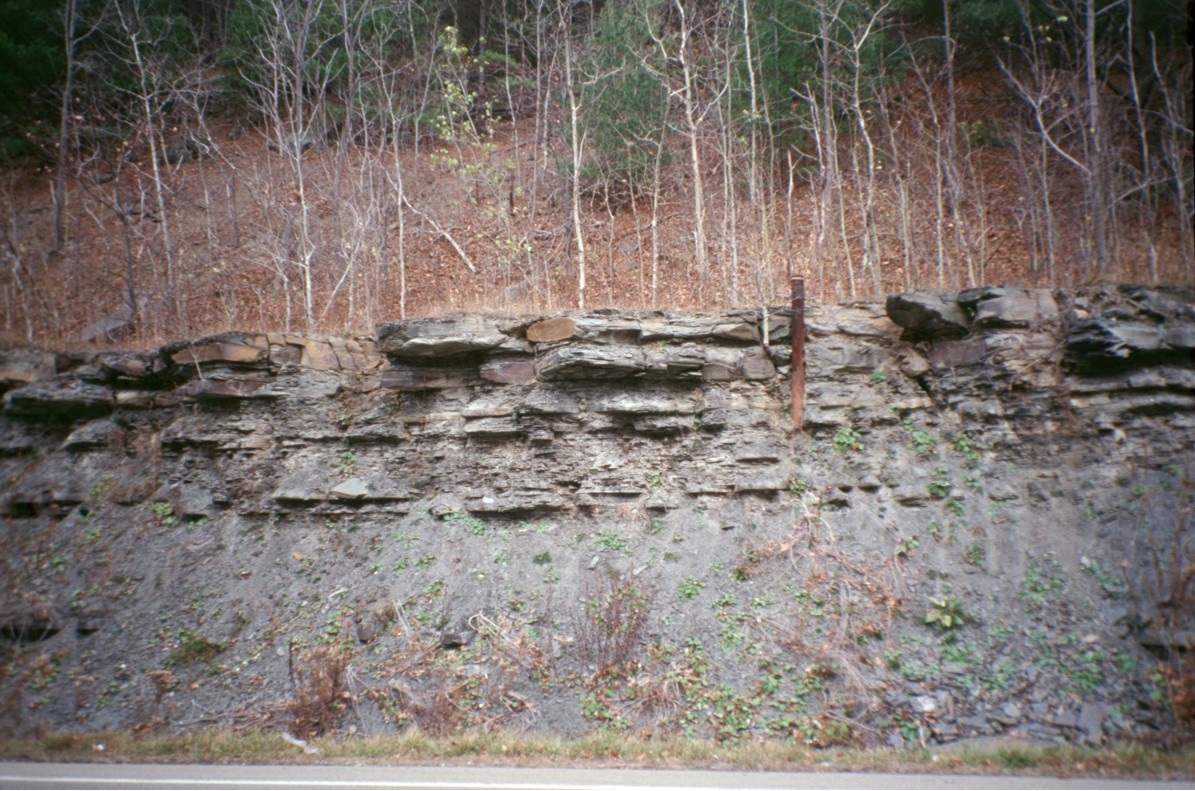
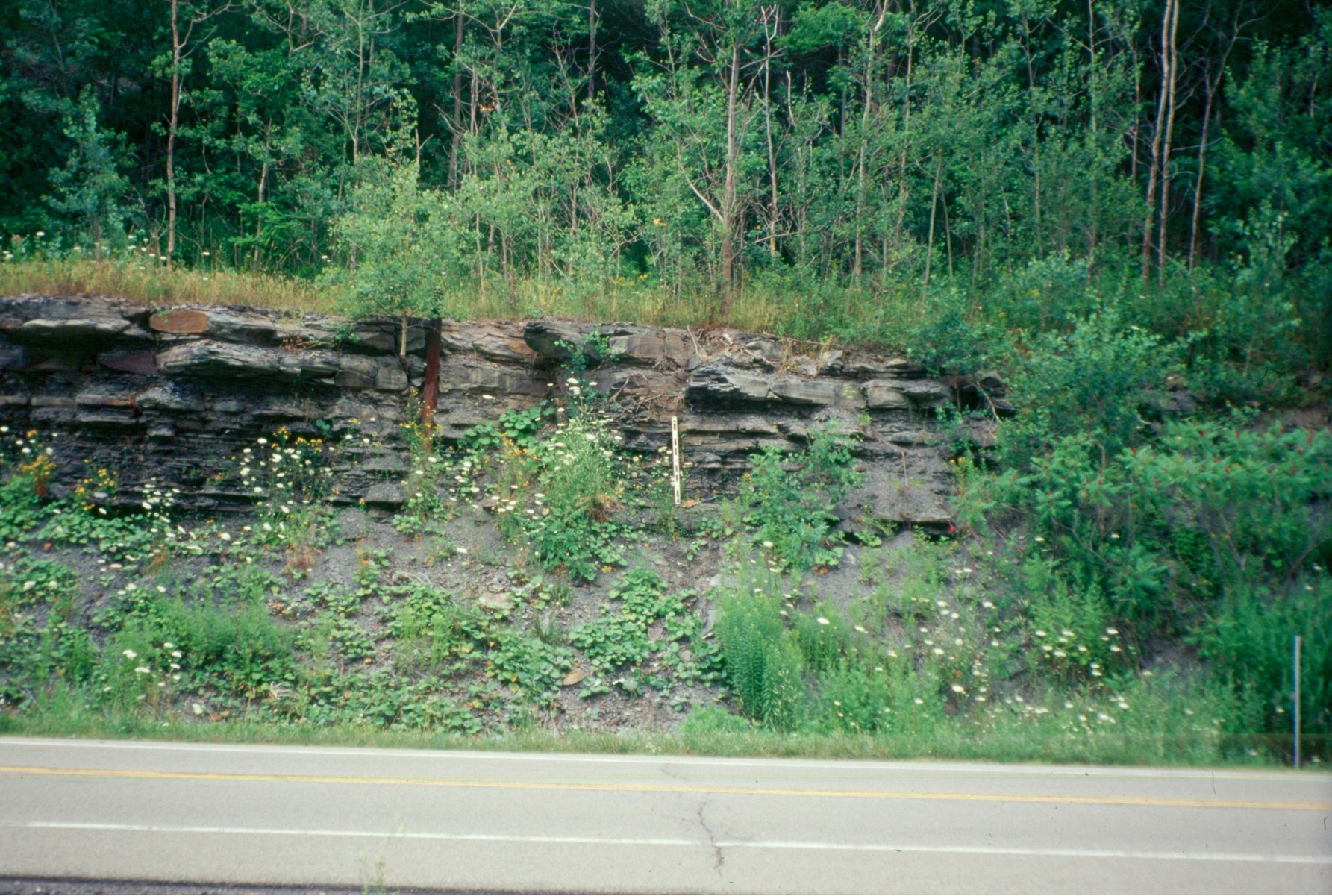
Thick sandstone of the Oswayo Formation along Rt 417 in the Allentown 7.5 topographic quadrangle.
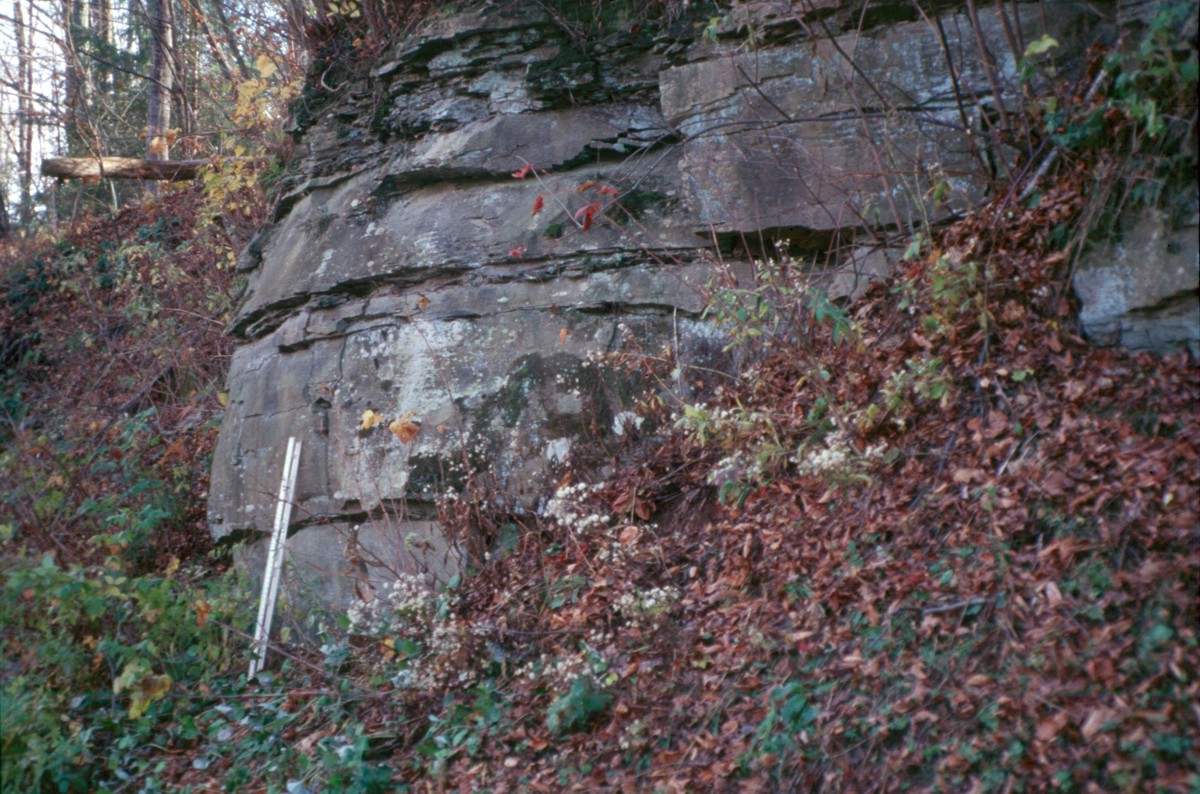
Roadcut along Barnum Rd. in the Olean quadrangle exposing the thick, amalgamated sandstone beds of the Oswayo Fm.
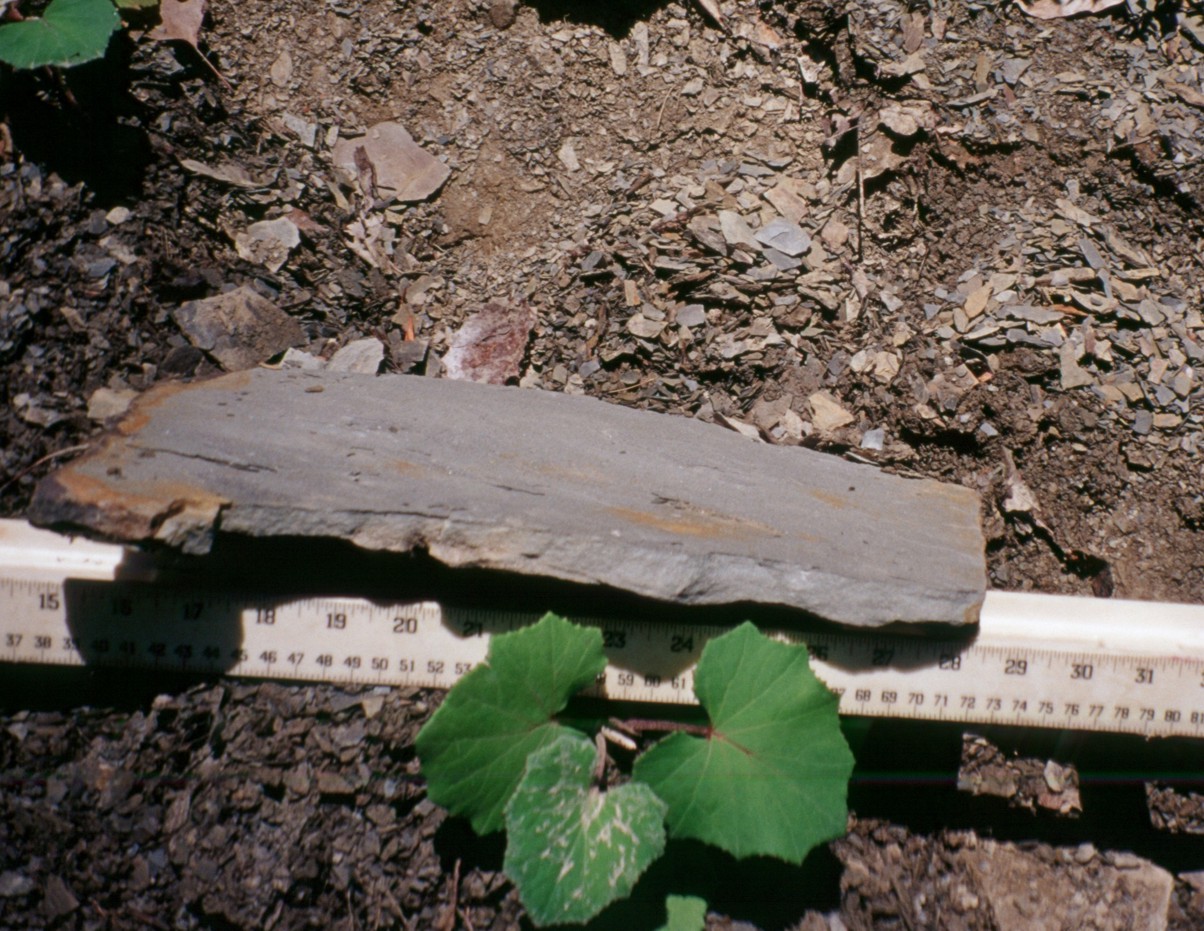
Distinctive of the Oswayo Fm. is a bluish cast to the unweathered sandstone beds.
Sample shown is from an outcrop along Rt. 16 in the Olean quadrangle.
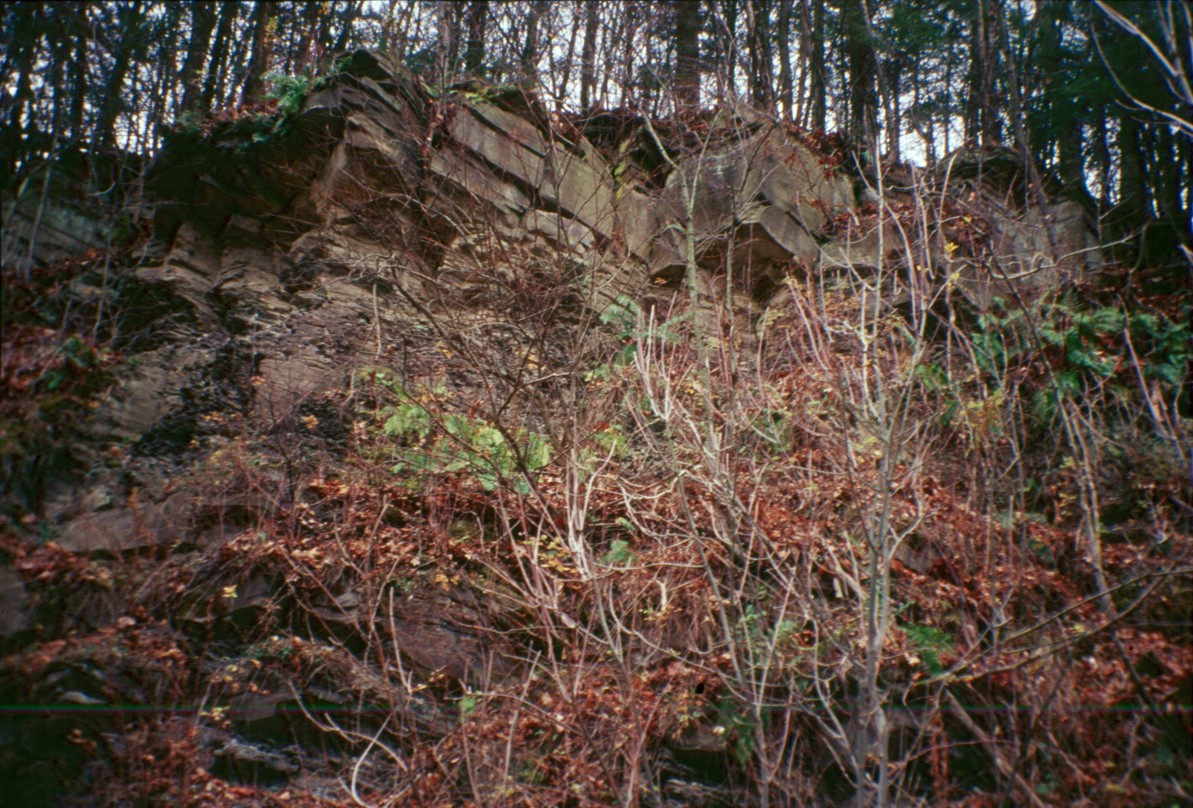
A second thick sandstone packet can also be seen along Rt. 417 in the Allentown quadrangle.
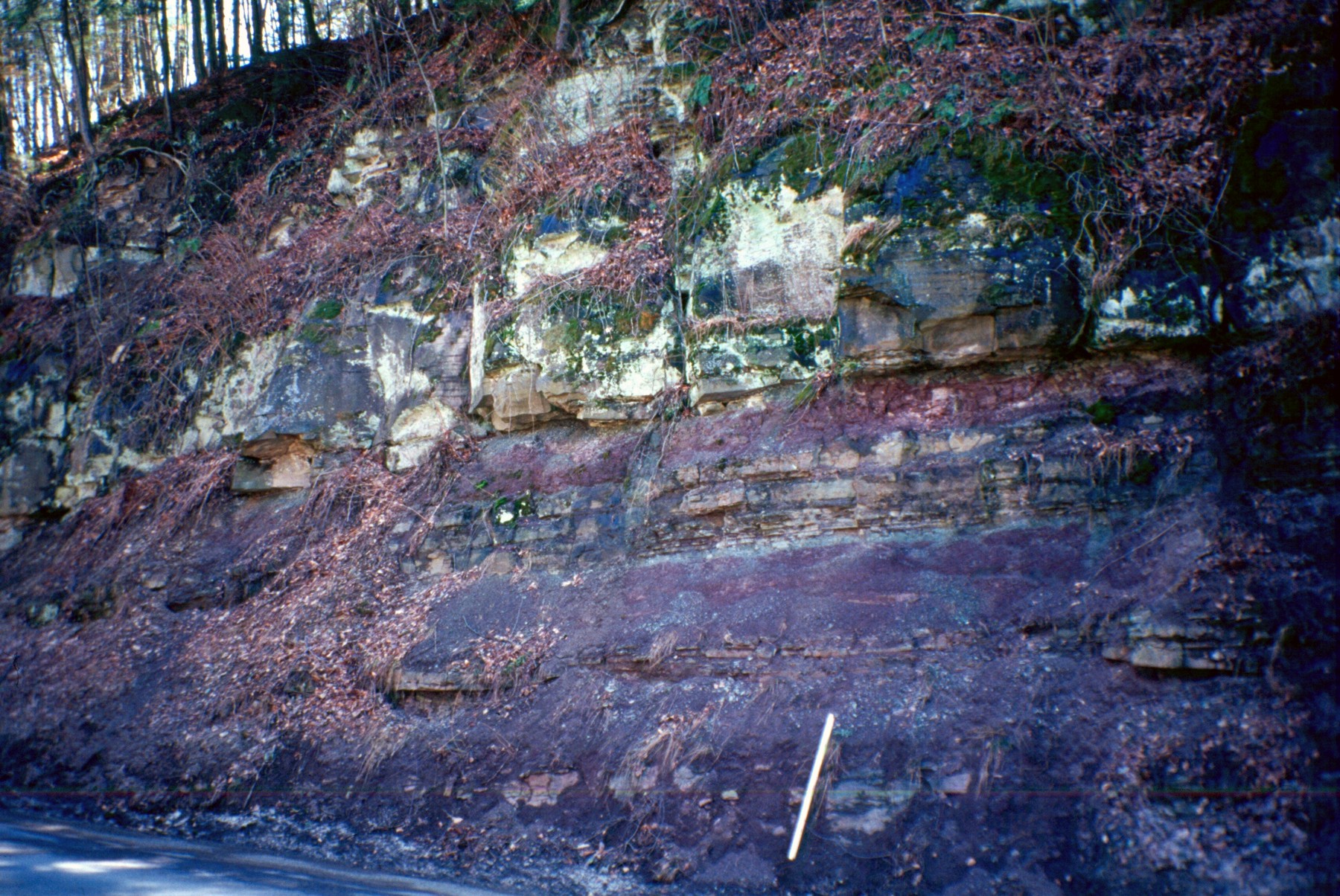
Oswayo Fm. eroding downing to the Cattaraugus Fm. in an outcrop
in Pennsylvania, south of the Olean quadrangle.